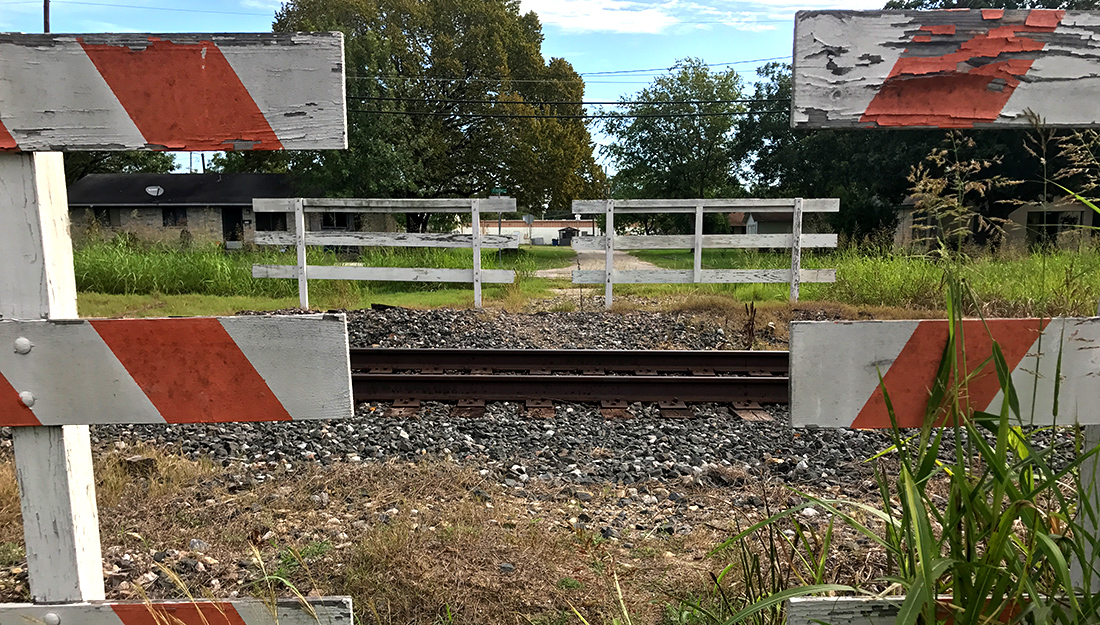- Marcia Ory, PhD, MPH
- Point of View, Show on VR homepage
Point of View: Addressing the opioid epidemic in rural areas
Why it’s a problem, and what we’re doing to help communities

Train track in a rural area
In the public health arena, it is common knowledge that rural communities and small towns are being hit especially hard by the opioid epidemic. Although the rate of drug overdose fatalities has increased across America, it is rising faster in nonmetro areas, which now have higher death rates (17.0 per 100,000 in 2015) than metro areas do (16.2 per 100,000 in 2015). This is compared to 1999, when the death rate in metro areas was 6.4 per 100,000 and the rate in rural areas was 4.0 per 100,000, according to a 2017 article in the Centers for Disease Control and Prevention (CDC) Morbidity and Mortality Weekly Report (MMWR). A surprising fact is that almost three fourths of farmers and farm workers report being directly impacted by opioid abuse, underscoring the substantial effect of the epidemic in rural areas.
Current national estimates are that there are 174 people dying from a drug overdose every day, according to the United States Department of Agriculture. We know that Texas hasn’t—yet—been hit as hard as other states, such as those in the Midwest, but with 191 rural counties, we can’t afford to become complacent.
We at the Texas A&M University Health Science Center have long focused on rural health disparities. Rural areas have unique characteristics. Studies show that residents in rural areas tend to be older, poorer and sicker. They also often lack adequate access to health care. The opioid crisis has consistently found a foothold in these populations. Thus, a joint goal is to strengthen rural communities’ health and to combat the opioid crisis.
We are committed to rural health, which has long been a priority of the Health Science Center. Evidence-based prevention, treatment and recovery services can make a great difference for those living in rural areas. Unfortunately, rural areas are less likely to have these services than urban areas are, and there are consistently more opioids prescribed to rural patients than urban patients. This might be because there are fewer pain management strategies and alternatives, especially for chronic pain. Those who live outside urban areas might not have a physical therapist, or a yoga class available, so there are fewer choices beyond the prescription pad. When treating pain in rural communities, providers need to be aware of effective multi-modal approaches to care.
There needs to be a balance. We don’t want people to be in severe pain, but we also don’t want opioids to be the first or only solution for chronic pain. We need to manage pain while avoiding opioid abuse. That’s the prevention side of addressing the opioid crisis.
From a treatment perspective, part of the problem is that people in rural areas tend to have less access to insurance, which “buys” medication-assisted treatment for opioid addiction. Not every physician can prescribe these treatments, and so these may not be available options for people in all areas. Finally, rural areas are less likely to have recovery programs, like Narcotics Anonymous and other groups, to help prevent relapses.
As an institution, we already have a presence in rural areas, which include all of the counties in the Brazos Valley that surround Bryan-College Station. This means we have a network we can build upon. For example, many of our medical residents train in rural clinics. Our public health students engage these rural communities in outreach activities. We are offering our chronic pain self-management program in these areas, which we hope people will try first instead of going immediately to prescription pain relief. We are also looking for ways to help educate physicians about these alternatives.
This year we’ve formed an Opioid Task Force that includes professionals from all five colleges of the Texas A&M Health Science Center—dentistry, medicine, nursing, pharmacy and public health. Each profession needs to teach and train the next generation in the field about the opioid crisis. We are establishing a student ambassador program across all of the health professions to identify a cadre of students to work with the task force by becoming engaged in research, education or service activities. They also have an important role in getting other students involved, such as talking to their classmates and even developing more formal surveys to determine what our future health care professionals already know about opioids so we as professors can help fill in the gaps.
Additionally, pharmacy students launched Texas A&M’s Operation Naloxone, a harm-reduction program that teaches people how to recognize an opioid overdose and administer naloxone, a medication that can reverse the effects of opioids long enough to get the person to a hospital. Joy Alonzo, PharmD, clinical assistant professor of pharmacy practice in the College of Pharmacy, has been helping the students launch these efforts in communities.
A group of Health Science Center faculty, led by Regina Bentley, EdD, MSN, RN, CNE, Assistant Vice Chancellor for Health Services at The Texas A&M University System and clinical associate professor at the College of Nursing, plans to launch our own arm of Project ECHO (which stands for Extension for Community Healthcare Outcomes). This program will allow teleconferencing between experts at the Health Science Center and rural health care providers to share best practices for treating chronic pain and addressing the opioid epidemic.
This problem is incredibly complex, and that means the solutions have to be innovative. The opioid crisis affects individuals, families and entire communities. That’s why we need all the health care professions working together with communities; it’s the only way we’re going to solve this crisis.
Media contact: media@tamu.edu


